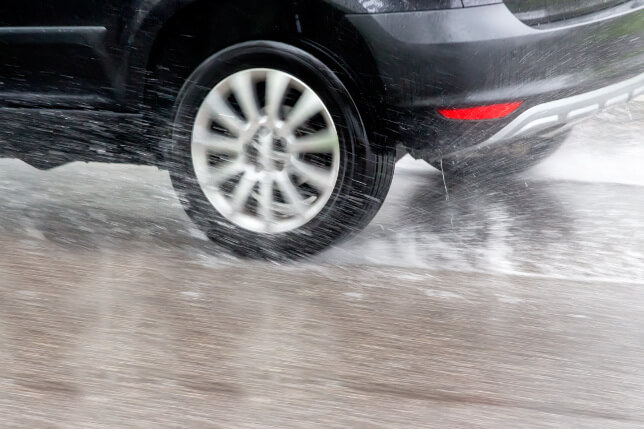In the UK, we’re used to ever-present grey skies, rainy days and the occasional visit from snow this time of year. What we’re not always prepared for however is losing control of our beloved cars. We may be used to driving in less than perfect conditions, and this overconfidence in our driving capabilities only leaves us more open to being unprepared for the unexpected.
With wet and icy roads, our cars are more susceptible to slipping and losing grip on the tarmac. As we mentioned, most of us are guilty of overestimating our driving skills at times. So even if you think you know the theory and that this is a bit of a teaching-your-grandmother-to suck-eggs situation, see these tips as important reminders instead.
Correcting Oversteer and Understeer
One reputable car publication* states that if you find yourself in a situation where your car is oversteering on wet road conditions, you need to calmly turn into the skid. For instance, if the rear end of your car swings out to the right you should correct it by steering to the right. Steering in the opposite direction could mean accidently spinning your vehicle.
They also explain that when it comes to experiencing understeer in bad weather conditions however, you should take your foot off of the accelerator immediately and straighten the steering wheel to enable the front tyres to recover traction.
Aquaplaning
We all know aquaplaning is when our tyres lose complete traction from being lifted off of the tarmac by water, but when is this most likely to happen? Essentially it depends on how fast you are driving, how deep the water is and the condition of your tyres.
How to Control and Avoid Aquaplaning
If you experience your car aquaplaning on wet roads, one online road safety site** explains that the first key thing to remember is to remain calm and most definitely do not slam on the brakes. This could cause the car to skid and make you lose control. Similarly, make sure you don’t start violently turning the steering wheel in different directions to regain control.
If you do happen to start skidding, you need to take your foot off the accelerator and try and let the car find its own path to recovery. This is difficult in a situation where all you want to do is regain control, but until you find that small bit of traction again, by telling the car what to do you could make the situation so much worse. Once you start to feel that traction, gently steer your car in the direction you intended to go and brake very gently if necessary.
There are several things to remember to avoid aquaplaning – the obvious being to reduce your speed in wet conditions, as well as avoiding pools of water where possible and to try and drive in tracks left by the driver in front. Finally, turn off cruise control when conditions are bad.


